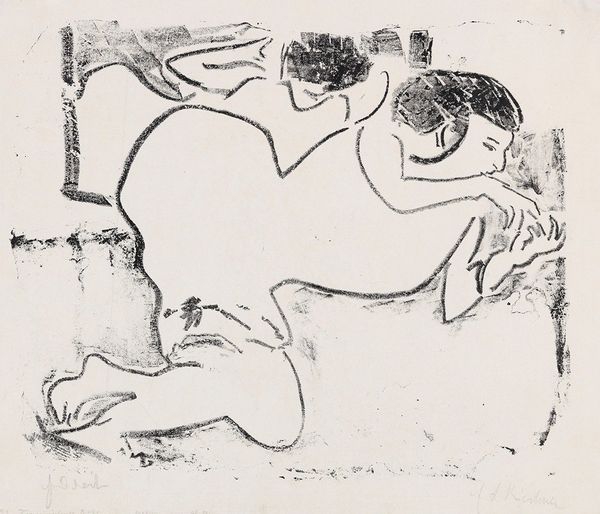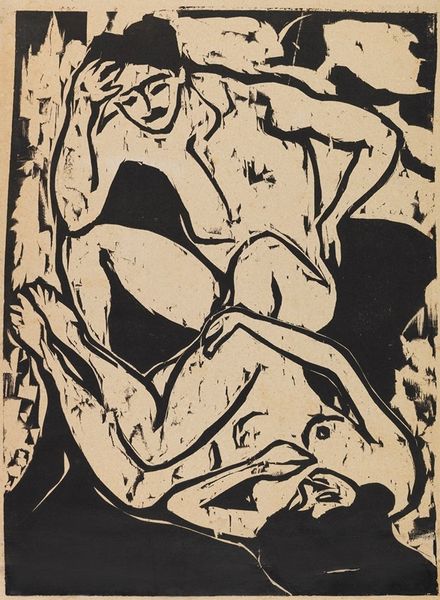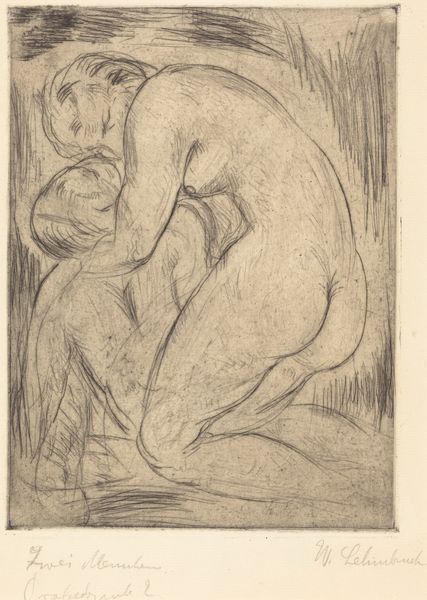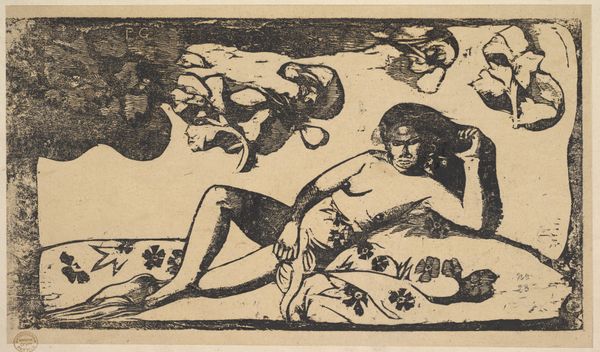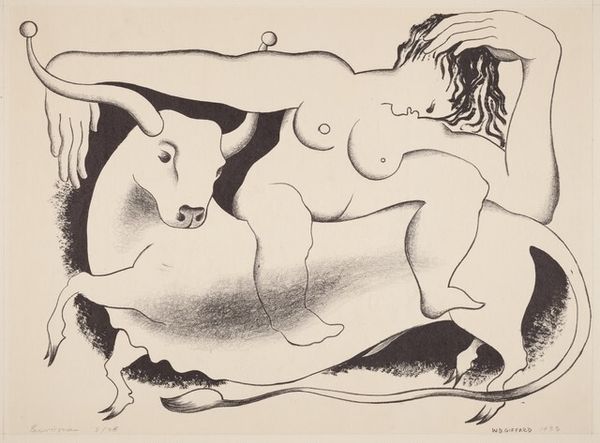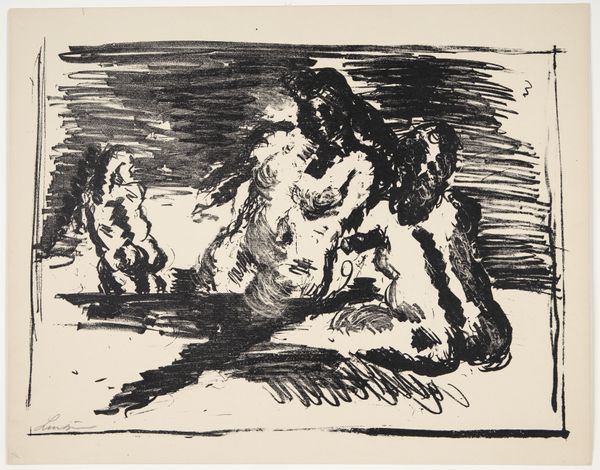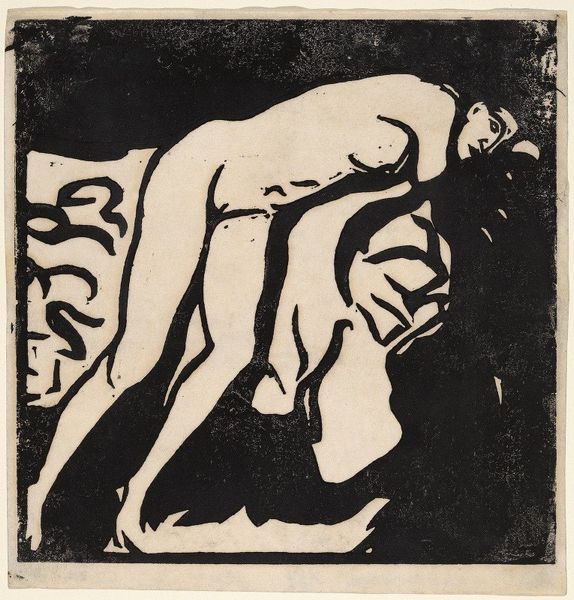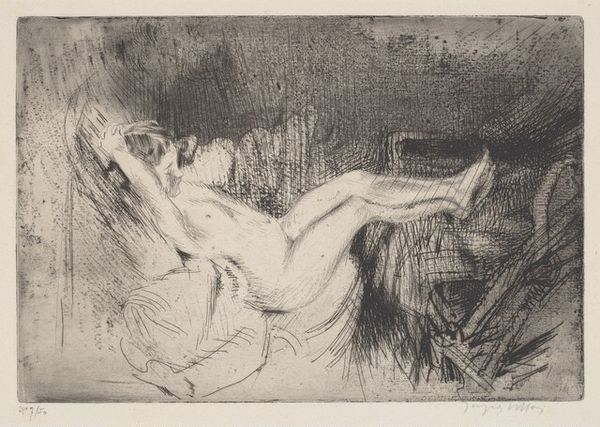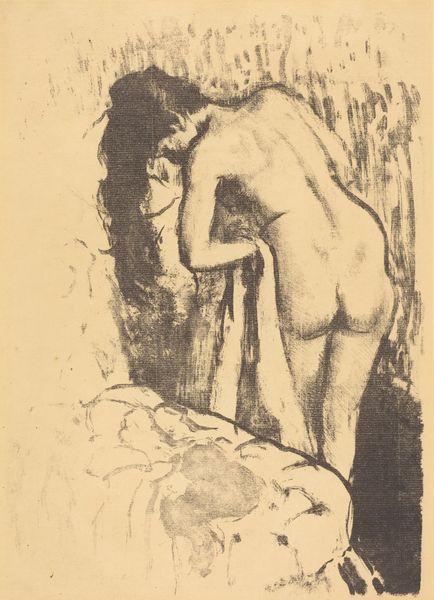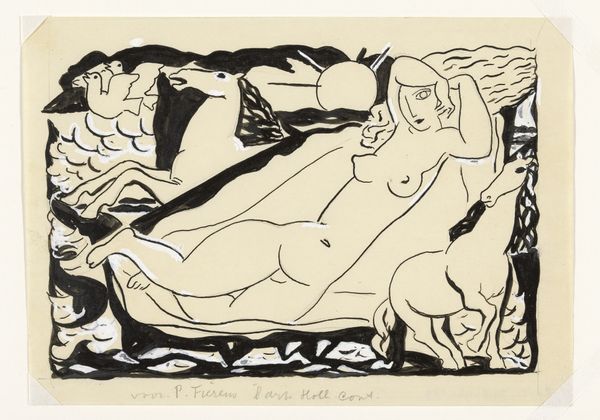
print, etching
#
ink drawing
# print
#
etching
#
german-expressionism
#
figuration
#
expressionism
#
nude
#
monochrome
Dimensions: sheet: 36.9 x 44.9 cm (14 1/2 x 17 11/16 in.)
Copyright: National Gallery of Art: CC0 1.0
Curator: Ah, here we are in front of Kirchner's "Reclining Nude," an etching from 1907. It's a striking example of his early expressionist explorations. Editor: My initial reaction is… vulnerable. There's a raw intensity in the lines, an almost uncomfortable exposure in the pose. It’s like peering into a private moment, wouldn't you say? Curator: Absolutely, it feels intensely private. The monochrome palette and harsh, jagged lines are so typical of early Die Brücke works—emphasizing the emotional rawness. We’re looking at a departure from traditional representations of the nude. This isn't about idealized beauty. It’s something far more psychologically charged. Editor: Exactly. We are so accustomed to idealized and objectified representations of women that this stark departure feels like a critique. It is as if Kirchner attempts to deconstruct those traditional portrayals, inviting a discourse around vulnerability, authenticity and agency. Is she a victim, an observer or both? Curator: Perhaps neither. Kirchner had a certain style which I believe stems from raw emotionality. Rather than setting a stage to be observed, this piece shows the artist feeling something that he must explore through his rendering of his model. It almost removes the nude woman herself as a primary figure, in its intense feeling. I also feel the patterning of the sheets amplifies the energy, this dynamism gives the picture its tension and a pulse-like quality, if I may. Editor: And this tension, as you note, echoes the anxiety present in Expressionism's exploration of subjectivity, specifically in relation to burgeoning societal and political transformations at the time. It begs us to consider the artist’s gaze and how it mediates the nude figure, revealing as much about the artist’s state as it does about the person portrayed. It feels deliberately disruptive, challenging viewers to reassess traditional notions of beauty and sexuality. Curator: I see your point. As much as the art may aim to express an intensely singular and almost inaccessible interiority, perhaps its power is also in offering this type of critical perspective, especially regarding those very notions you cite that continue to be pertinent even today. A very timely Kirchner! Editor: Indeed! This small etching presents big, unending conversations about bodies, visibility, and the multifaceted role of art as a catalyst for change and self-discovery.
Comments
No comments
Be the first to comment and join the conversation on the ultimate creative platform.
